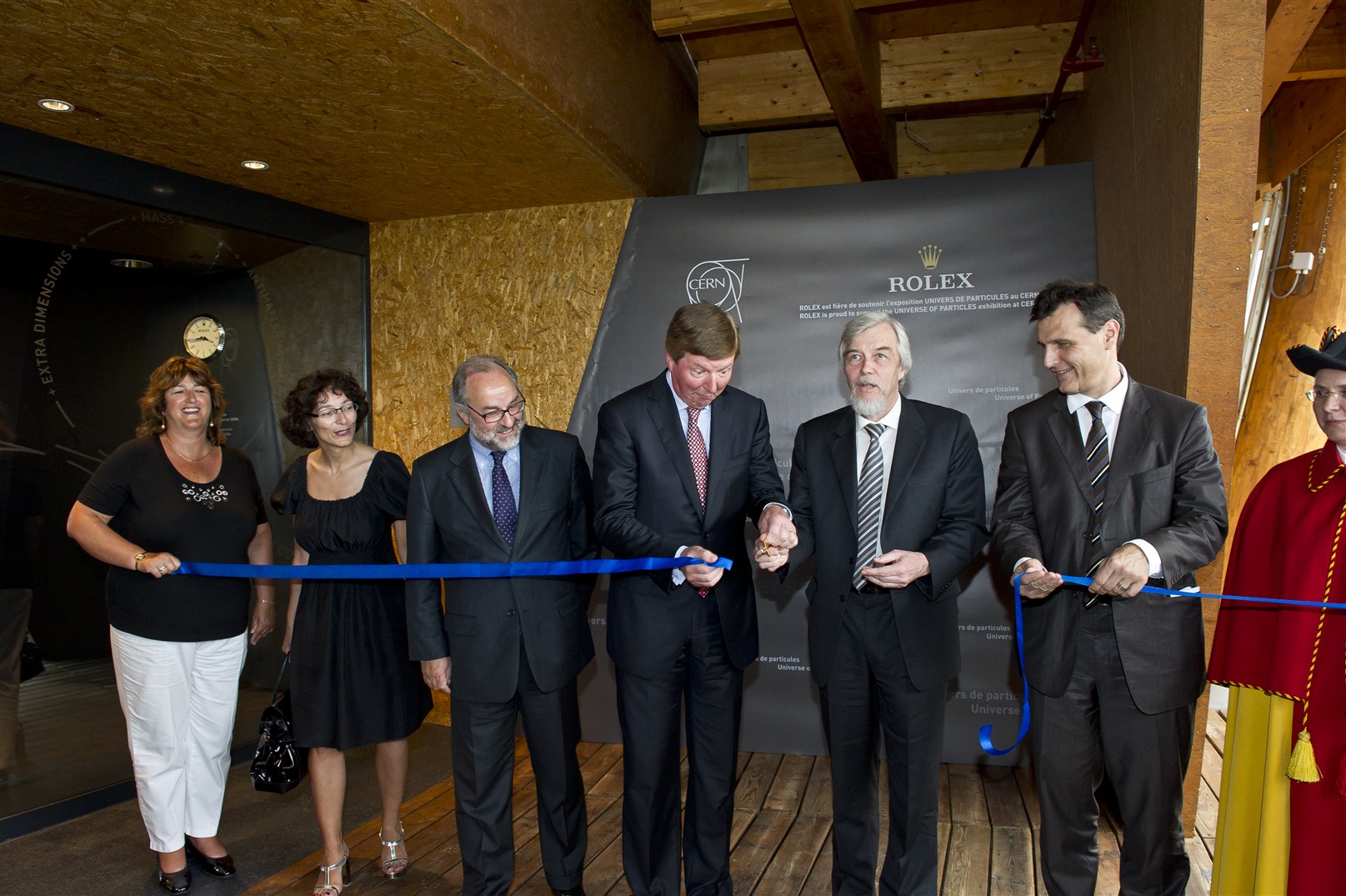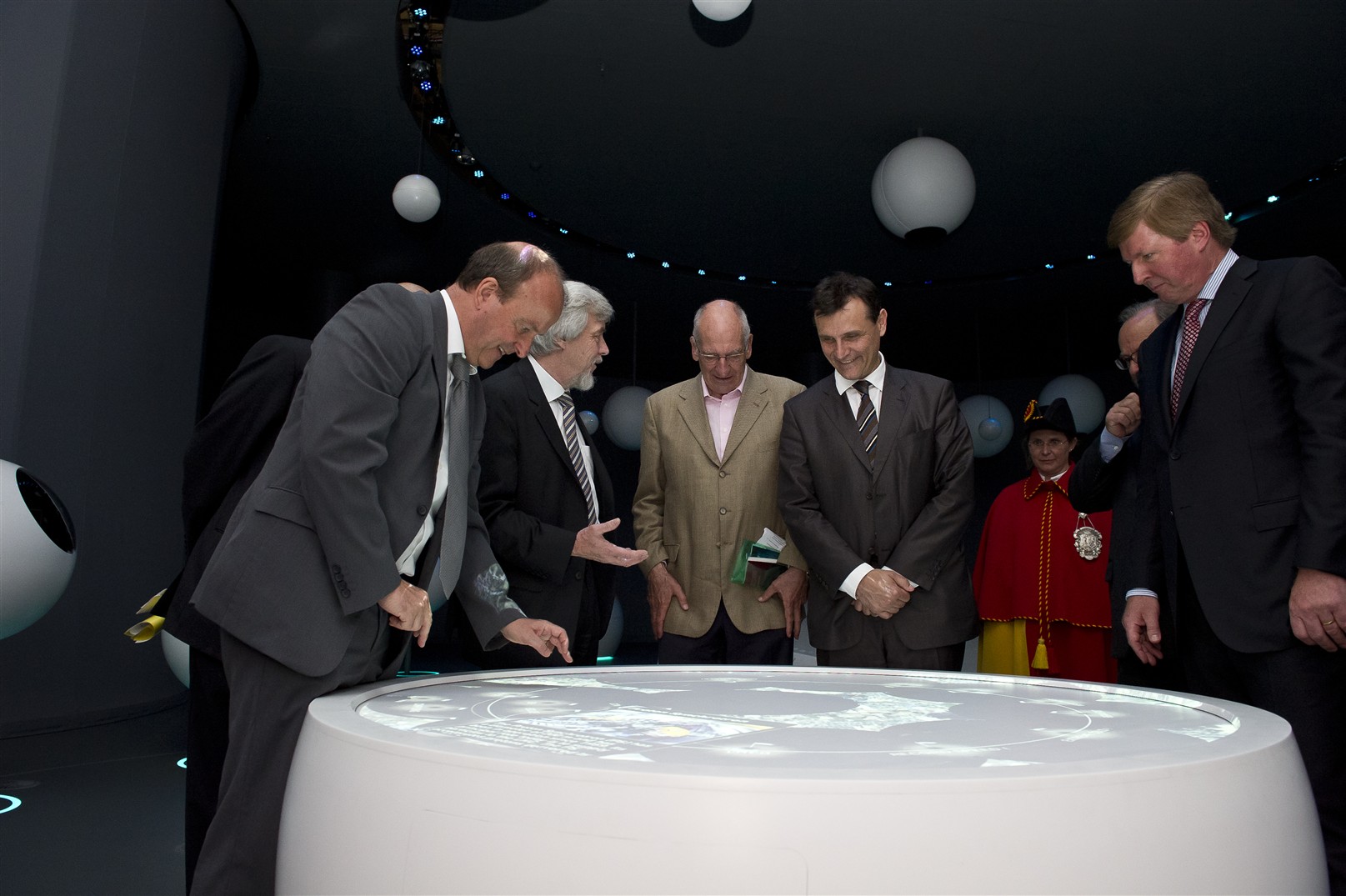Highlights of the inauguration ceremony for the new permanent exhibition
The new “Universe of Particles" permanent exhibition in the Globe was unveiled this week to its first visitors. On Monday, 28 June, in the presence of representatives of the local authorities, CERN Director-General Rolf Heuer cut the ribbon; on Tuesday, 29 and Wednesday 30 June the Globe's doors remained open for visits by the CERN personnel.
At the conclusion of the inauguration ceremony, the Head of the Education Group, Rolf Landua, expressed his satisfaction: “It's wonderful. We are very happy that it has all turned out so well. Now we look forward to lots of visitors.”
The exhibition represents a major addition to the tourist destinations in the region and an important tool for the public awareness of science, which could also be useful for schools. “The purpose of the exhibition is to inspire visitors, to arouse their curiosity about science and to motivate them to find out more about it.”, explains Rolf Landua. This conclusion was confirmed by Charles Beer, State Councillor of the Republic and Canton of Geneva and Head of the Department of Public Instruction, Culture and Sport: “The stakes of fundamental research are so great that that it is important for the general public to have the capacity to understand them. Within the Canton, there are few initiatives of this kind, and with this public awareness exhibition CERN is providing schools and the general public with the opportunity to get to grips with and to obtain a virtual experience of those stakes.” “This exhibition is a splendid tool for the entire local population”, adds Guy Larmanjat, Vice-President of the General Council of the Department of the Ain, where he has responsibility for tourism and cross-border issues. "The technology used for the exhibition is in itself a public awareness of science tool. In our view, this exhibition will be a tourist landmark. Today, the Director-General expressed the hope that the exhibition would attract 60 to 70'000 visitors: it will be a veritable magnet!"
Everything in the exhibition is “ round”, “ futuristic” and high-tech. The lighting effects play a major role and everything is interactive. “We started with two design concepts: a “ round” one and a “cubic” one," explains Shirin Brückner, Managing Director of the Atelier Brückner which produced the exhibition. Some of our colleagues preferred the “cubic” version, but the “round” one eventually won the day because it seemed to us to be more symbolic, more readily understandable and in keeping with the world of fundamental particles and our conception of the Universe.”
Rolex, which sponsored the exhibition, was also enthusiastic about the outcome of this partnership: “We have long-standing connections with CERN and many of the values that CERN stands for are shared by us at Rolex, such as the transmission of knowledge and making young people aware of science and technology. In addition, CERN has an international dimension and Rolex is the world's leading luxury watch manufacturer; CERN strives for technological innovation in the pursuit of knowledge, and Rolex is driven by similar goals. There is thus a strong affinity between us”, underlines Jacques Baur, Associate Director of Rolex SA.
A complete photographic record of the inauguration is available at: http://cds.cern.ch/record/1274274
The inauguration of the exhibition is also on the front page of the "Respect changes your life" site: http://www.lerespect.org/ and http://www.lerespect.org/Partenaires/CERN/Cern.htm
What plans are there for Microcosm?
With the advent of the new exhibition in the Globe, Microcosm will be revamped as a teaching aid for the many schoolchildren who visit CERN. “The visit to Microcosm will complement the tour of the installations, which normally takes half a day," explains Rolf Landua. “The teaching activities will be guided and might include small experiments enabling the children to gain a better understanding of particle physics.”



